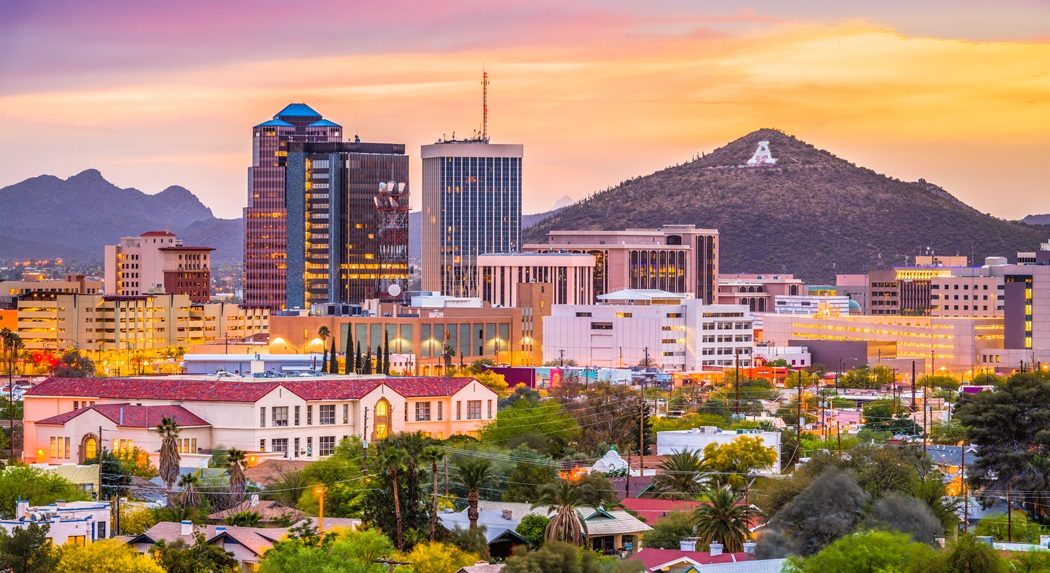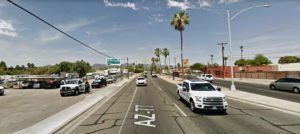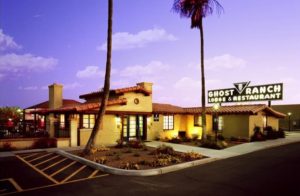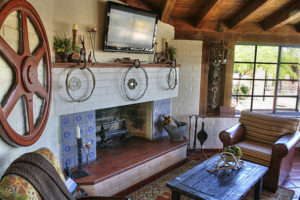In the last decade, Tucson, Arizona has seen unprecedented investment in infill development downtown. This is partly a result of its successful new streetcar line—which connects the University of Arizona area, 4th Avenue Business District, the Mercado redevelopment area, and downtown—and partly due to reforms and tax breaks supporting transit-oriented development.
Having learned from this success, Tucson is now turning its community development priorities to lower-income neighborhoods that have not been able to attract private investment, like the Oracle area, whose “Miracle Mile” corridor was just listed on the National Register of Historic Places in December of 2017.
Between 1920 and 1960, any visitor traveling through Tucson experienced The Miracle Mile, the city’s 1.75-mile long automobile gateway north of downtown. With its Old Spanish Trail marketing, Tucson was one of the first cities to promote automobile-based tourism, dating all the way back in 1916.
But automobile-centered development seldom creates charming places, and by 1987, the name “Miracle Mile” had become so associated with unsavory activity that the city renamed the main north-south stretch of the route Oracle Road. In just 50 years’ time, the brand had fallen from a draw to liability.
For city leaders, attracting new investment to neglected neighborhoods is a fraught challenge. Every decision must juggle housing affordability, economic opportunity and mobility for existing residents, and preserving an area’s unique cultural and historic heritage.
In this year’s Rose Center for Public Leadership land use fellowship, those questions are taking center stage. Now in its ninth year, the Daniel Rose Land Use Fellowship is an annual program of the National League of Cities (NLC), in partnership with the Urban Land Institute (ULI) that provides technical assistance on a local urban development challenge in four large U.S. cities each year. The 2017-2018 cohort includes Columbus, Ohio, Richmond, Virginia, Salt Lake City, Utah, and Tucson, Arizona.
In Tucson, Mayor Jonathan Rothschild is seeking advice on land use goals and a regulatory framework for infill development and neighborhood revitalization of the Oracle area, a 2.6 square mile district. Located north of downtown, the Oracle district was the historic northern gateway into the city before Interstate 10 was completed in the 1960s. It has now been designated as “high-stress” by the City’s Poverty and Urban Stress Index. For Tucson, providing affordable housing and renovating existing housing stock are prime objectives.
However, recent years have brought encouraging signs including the adaptive reuse of the long-vacant Ghost Ranch Lodge by Atlantic Development as affordable senior housing. Atlantic undertook a labor of love in restoring the property to its former grandeur, employing a complex capital stack including CDBG, HOME, LIHTC, and federal historic tax credits, among other sources.
It was back on April 30, 2011 that Atlantic Development & Investments, Inc. celebrated the completion of the rehabilitation of the historic Ghost Ranch Lodge motorcourt hotel into affordable senior housing.
The history of Ghost Ranch Lodge Apartments and its rehabilitation was been complex and extensive. Originally designed by renowned Swiss architect Josias Joesler in 1941, Ghost Ranch Lodge holds a unique place in the history of Tucson, and indeed, Arizona.
Having served the community for over half a century, Ghost Ranch Lodge was sadly a seriously dilapidated vacant complex before its renovation (2009-2011) by an affiliate of Atlantic Development & Investments Inc.
The affordable housing community began accommodating low-income seniors and the physically disabled in July of 2010. The community was at full occupancy for its April 30, 2011 grand opening, upon the completion of the second phase.
The property is composed of twenty historic buildings, built between 1941 and 1953. The property also contains the famous Desert Cactus Garden, which is the residence of the officially recognized “Great Tree of Arizona,” the largest Boojum Tree in the state of Arizona.
The results are a shining example of how to reuse historic properties — even if the funding complexity would be difficult to replicate en masse.
Featured photo of downtown Tucson via Adobe Stock.
Learn more about the Miracle Mile’s rebirth in the full article by Gideon Berger on the NLC website.




